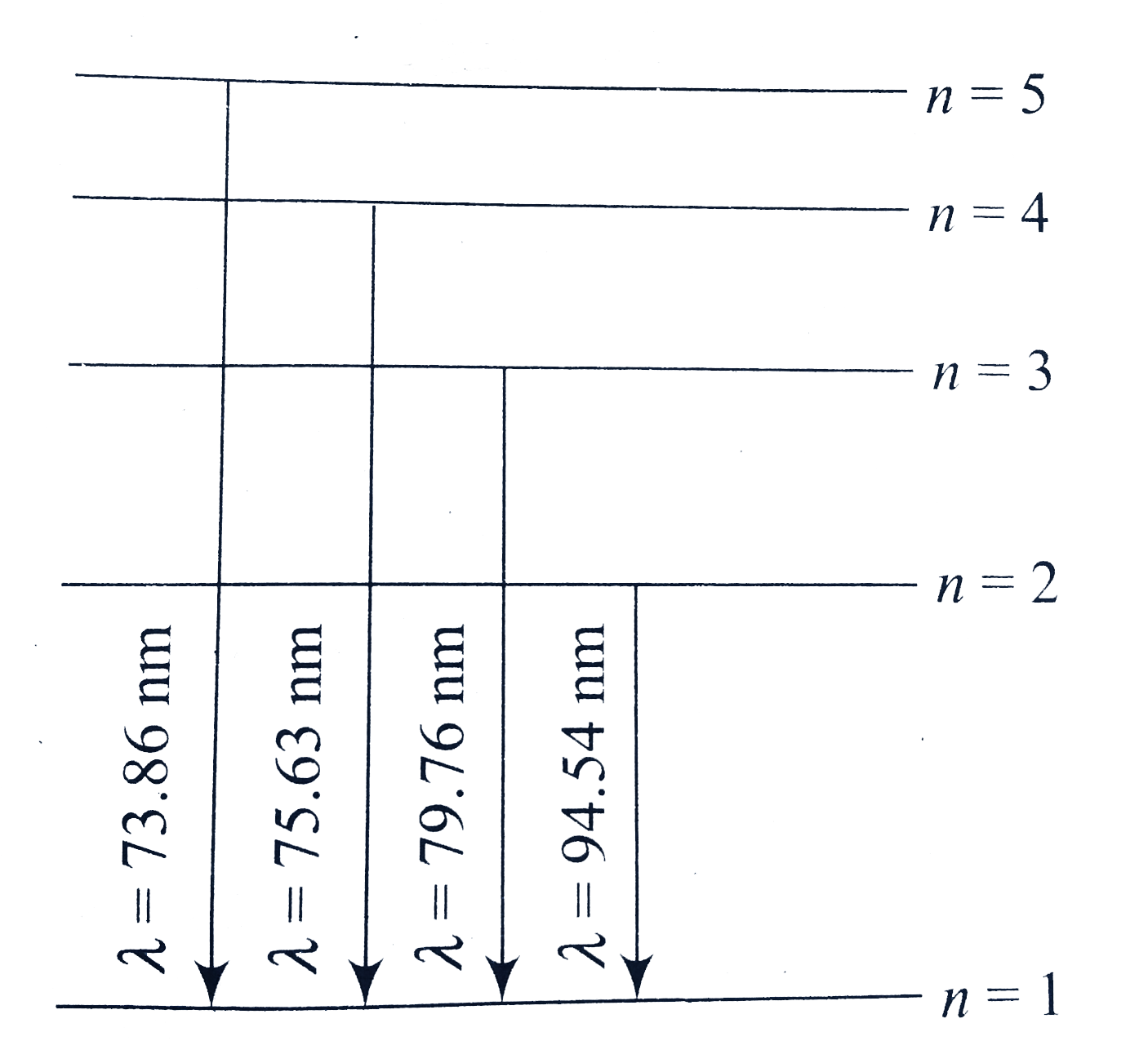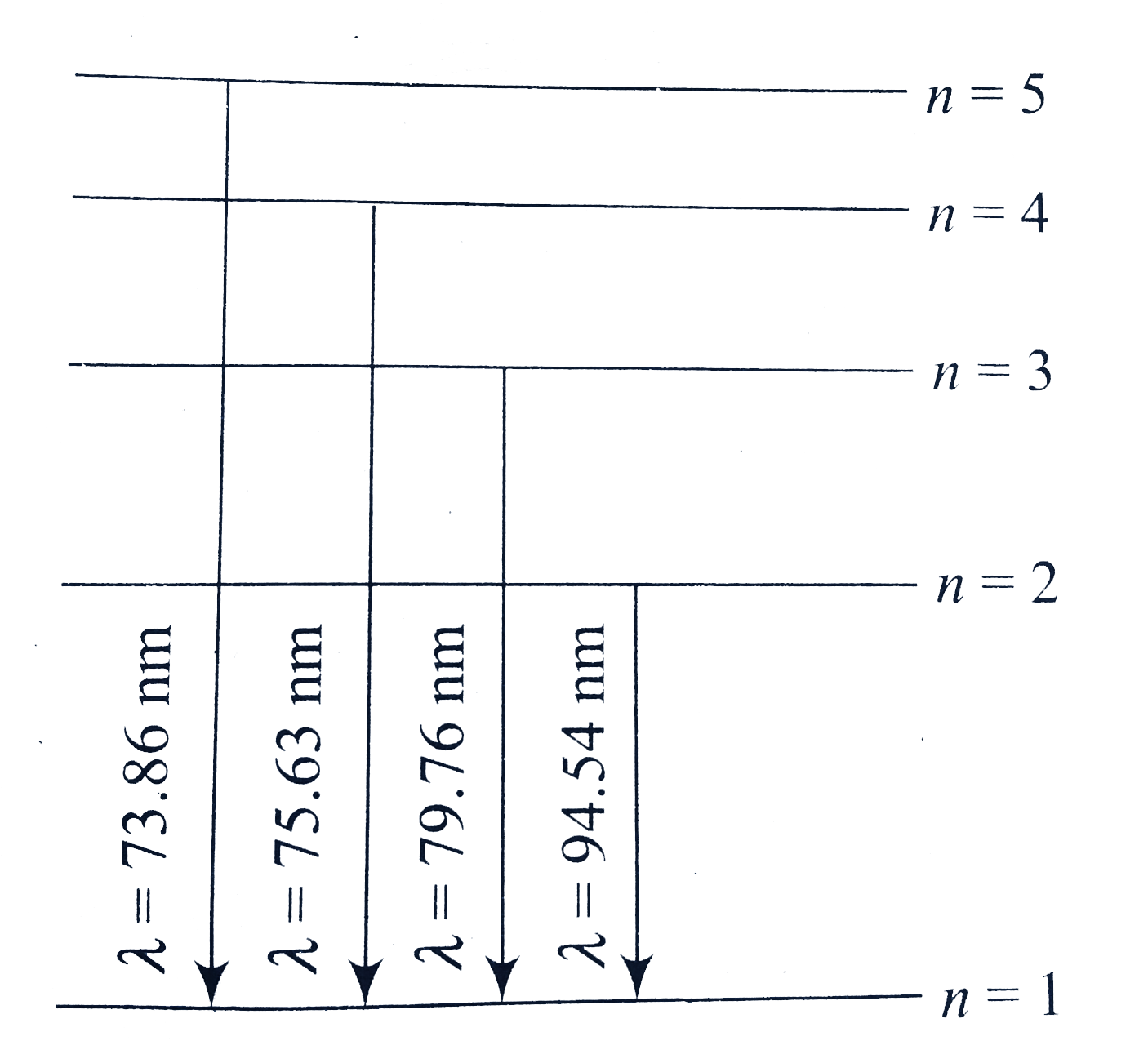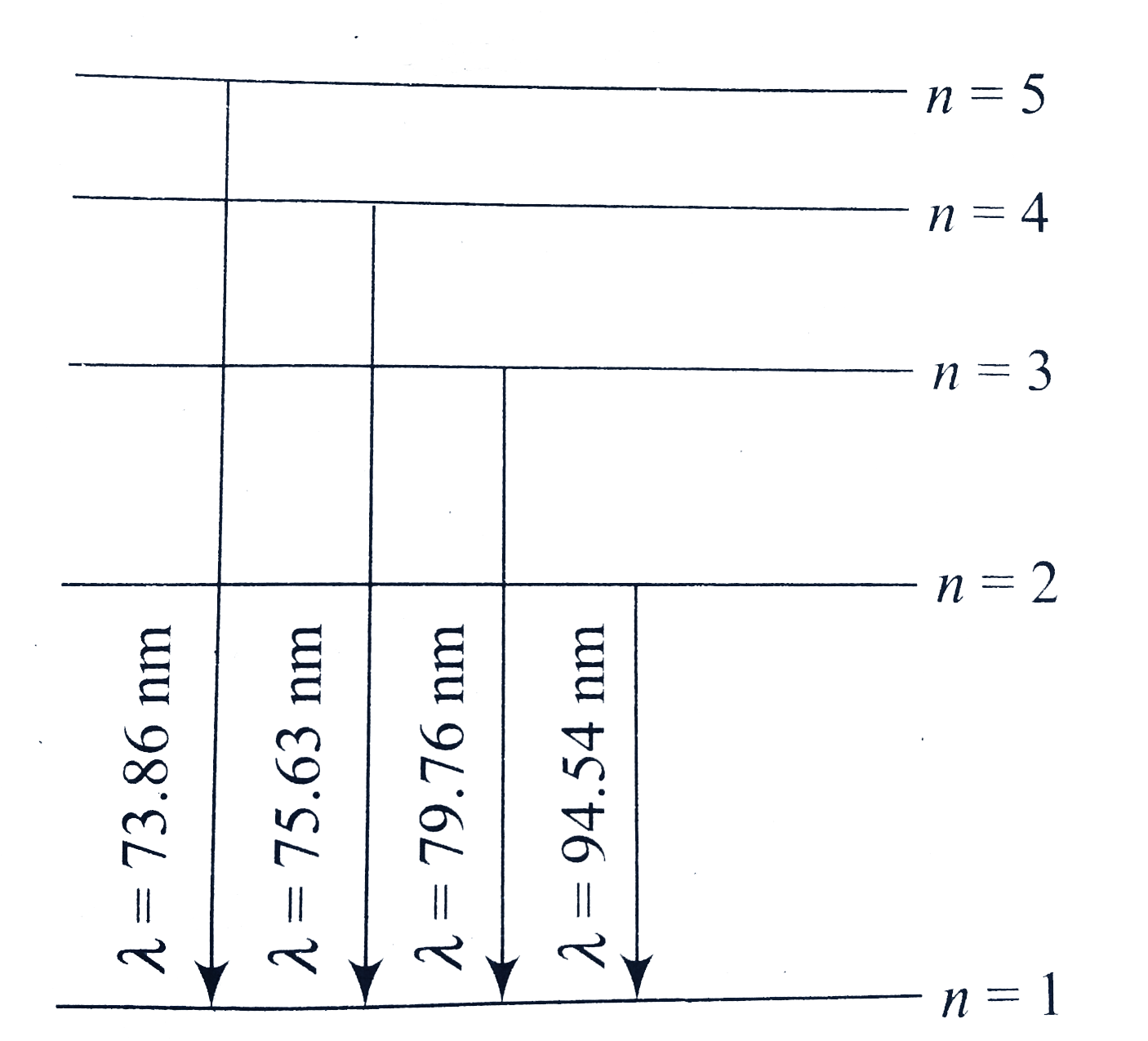The wavelengths of photons emitted by electron transition between two similar leveis in H and are and respectively. Then :-
The correct Answer is:D
(for H atom)
(for atom)
Topper's Solved these Questions
- BOOK - ALLENCHAPTER - ATOMIC STRUCTUREEXERCISE - Exercise - 0322videos
ATOMIC STRUCTURE
- BOOK - ALLENCHAPTER - ATOMIC STRUCTUREEXERCISE - Exercise - 04[A]51videos
ATOMIC STRUCTURE
- BOOK - ALLENCHAPTER - ATOMIC STRUCTUREEXERCISE - Exercise - 0138videos
ATOMIC STRUCTURE
- BOOK - ALLENCHAPTER - IUPAC NOMENCLATUREEXERCISE - Exercise - 05(B)8videos
IUPAC NOMENCLATURE
Similar Questions
Knowledge Check
- Question 1 - Select One
Hydrogen (H), deuterium (D), singly ionized helium (He+) and doubly ionized lithium (Li) all have one electron around the nucleus. Consider n=2 to n=1 transition. The wavelength of emitted radiations are λ1,λ2,λ3 and λ4 respectively. then approximately
Aλ1=λ2=4λ3=9λ4B4λ1=2λ2=2λ3=λ4Cλ1=2λ2=2√2λ3=3√2λ4Dλ1=λ2=2λ3=3√2λ4 - Question 2 - Select One
A dye absorbs a photon of wavelength λ and re− emits the same energy into two phorons of wavelengths λ1 and λ2 respectively. The wavelength λ is related with λ1 and λ2 as :
Aλ=λ1+λ2λ1λ2Bλ=λ1λ2λ1+λ2Cλ=λ21λ22λ1+λ2Dλ=λ1λ2(λ1+λ2)2 - Question 3 - Select One
Photons of energy 7 eV are incident on two metals A and B with work functions 6 eV and 3 eV respectively. The minimum de Broglie wavelengths of the emitted photoelectrons with maximum energies are λA and λB, respectively where λA/λB is nearly
A0.5B14C4.0D2.0
The wavelength of the photon emitted by a hydrogen atom when an electron makes a transition from n = 2 to n = 1 state is :
View SolutionIn a set of experiment on a hydrogen on a hypothetical one-electron atom, the wavelength of the photons emitted from transition ending in the ground state (n=1) are shown in the energy level diagram

λ5→1=73.86nm
λ4→1=75.63nm
λ3→1=79.76nm
λ2→1=94.54nm
If an electron made a transition from n = 4 to n = 2 level, the wavelength of the light that it would emit is nearlyView SolutionThe wavelength of electron waves in two orbits (λ1:λ2)
View SolutionIn a set of experiment on a hydrogen on a hypothetical one-electron atom, the wavelength of the photons emitted from transition ending in the ground state (n=1) are shown in the energy level diagram

λ5→1=73.86nm
λ4→1=75.63nm
λ3→1=79.76nm
λ2→1=94.54nm
The energy of the atom in level n=1 is nearlyView SolutionIn a set of experiment on a hydrogen on a hypothetical one-electron atom, the wavelength of the photons emitted from transition ending in the ground state (n=1) are shown in the energy level diagram

λ5→1=73.86nm
λ4→1=75.63nm
λ3→1=79.76nm
λ2→1=94.54nm
The possible energy of the atom in n=3 cannot beView Solution


